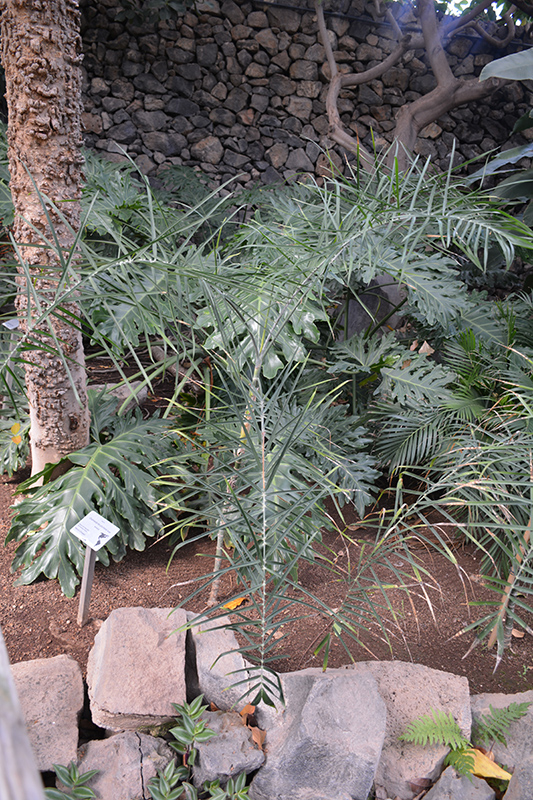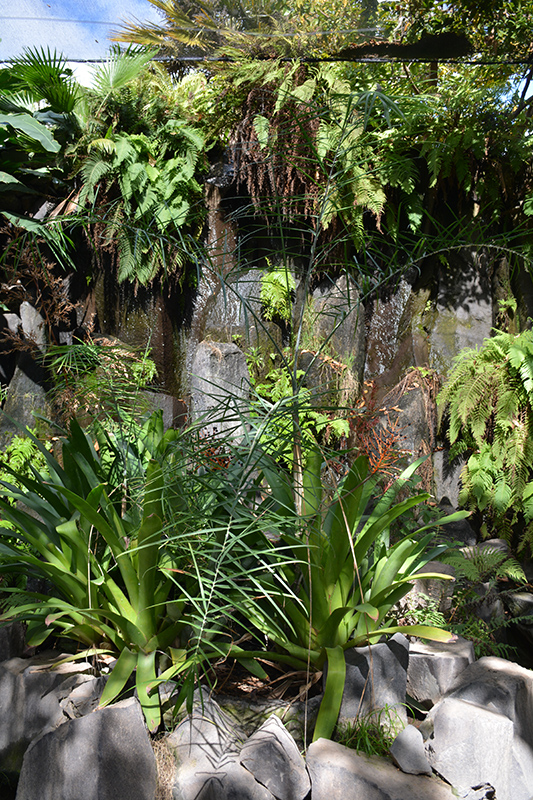Height: 20 feet Spread: 6 feet
Sunlight:
Hardiness Zone: 9b Other Names: Miniature Queen Palm, Sun Chamaedorea Palm Description: A compact, single trunk palm that looks great planted in multiples; feathery fronds have a fluffy appearance, creating an elegant accent for the patio or garden; tolerates full sun, but also great for filtered light areas; can be grown as a houseplant Ornamental Features Baby Queen Palm is primarily grown for its highly ornamental fruit. The fruits are showy black drupes carried in abundance from late summer to early fall. It has attractive green evergreen foliage. The narrow pinnately compound leaves are highly ornamental and remain green throughout the winter. It features dainty clusters of yellow flowers with orange overtones along the branches from early to mid summer. Landscape Attributes Baby Queen Palm is an open evergreen tree with a strong central leader and a towering form, with a high canopy of foliage concentrated at the top of the plant. It lends an extremely fine and delicate texture to the landscape composition which can make it a great accent feature on this basis alone. This is a relatively low maintenance tree, and should not require much pruning, except when necessary, such as to remove dieback. It has no significant negative characteristics. Baby Queen Palm is recommended for the following landscape applications; Planting & Growing Baby Queen Palm will grow to be about 20 feet tall at maturity, with a spread of 6 feet. It has a low canopy with a typical clearance of 4 feet from the ground, and is suitable for planting under power lines. It grows at a fast rate, and under ideal conditions can be expected to live for approximately 15 years. This is a dioecious species, meaning that individual plants are either male or female. Only the females will produce fruit, and a male variety of the same species is required nearby as a pollinator. This tree performs well in both full sun and full shade. It does best in average to evenly moist conditions, but will not tolerate standing water. It is not particular as to soil pH, but grows best in rich soils. It is somewhat tolerant of urban pollution. This species is not originally from North America.. Baby Queen Palm is a fine choice for the yard, but it is also a good selection for planting in outdoor pots and containers. Because of its height, it is often used as a 'thriller' in the 'spiller-thriller-filler' container combination; plant it near the center of the pot, surrounded by smaller plants and those that spill over the edges. It is even sizeable enough that it can be grown alone in a suitable container. Note that when grown in a container, it may not perform exactly as indicated on the tag - this is to be expected. Also note that when growing plants in outdoor containers and baskets, they may require more frequent waterings than they would in the yard or garden.![]()
![]()
![]()
![]()
![]()
![]()
![]()
![]()
![]()
![]()
![]()
![]()
![]()
top of page
Louie's Nursery Menifee - Plant Finder
Characteristics
Applications
Features & Attributes
This tool is an online resource representing many of the varieties that we carry over the course of the season, and is intended for informational purposes only. Inventory varies seasonally, so we cannot guarantee that every plant will be in stock at all times - please contact the store directly for current availability. It does not include our entire selection of plants, so be sure to visit our store to see varieties that may not be represented on this list.
bottom of page


